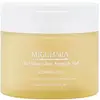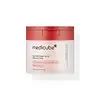What's inside
What's inside
 Key Ingredients
Key Ingredients

 Benefits
Benefits

 Concerns
Concerns

 Ingredients Side-by-side
Ingredients Side-by-side

Anthemis Nobilis Flower Water
MaskingWater
Skin ConditioningGlycerin
HumectantButylene Glycol
HumectantPropanediol
SolventNiacinamide
SmoothingDipropylene Glycol
HumectantPolyglycerin-3
HumectantMethyl Gluceth-20
HumectantDiglycerin
Humectant1,2-Hexanediol
Skin ConditioningPolyglyceryl-10 Laurate
Skin ConditioningDiphenyl Dimethicone
EmollientAcrylates/C10-30 Alkyl Acrylate Crosspolymer
Emulsion StabilisingTriethylhexanoin
MaskingTromethamine
BufferingMaltodextrin
AbsorbentEthylhexylglycerin
Skin ConditioningSaccharide Hydrolysate
HumectantAdenosine
Skin ConditioningChamomilla Recutita Flower Extract
MaskingChrysanthemum Zawadskii Extract
Skin ConditioningRosa Multiflora Extract
AntioxidantPolyglyceryl-10 Oleate
Skin ConditioningHydrogenated Lecithin
EmulsifyingDisodium EDTA
Xanthan Gum
EmulsifyingParfum
MaskingCoptis Japonica Root Extract
Skin ConditioningSalix Alba Bark Water
AstringentPortulaca Oleracea Extract
Skin ConditioningAnthemis Nobilis Flower Water, Water, Glycerin, Butylene Glycol, Propanediol, Niacinamide, Dipropylene Glycol, Polyglycerin-3, Methyl Gluceth-20, Diglycerin, 1,2-Hexanediol, Polyglyceryl-10 Laurate, Diphenyl Dimethicone, Acrylates/C10-30 Alkyl Acrylate Crosspolymer, Triethylhexanoin, Tromethamine, Maltodextrin, Ethylhexylglycerin, Saccharide Hydrolysate, Adenosine, Chamomilla Recutita Flower Extract, Chrysanthemum Zawadskii Extract, Rosa Multiflora Extract, Polyglyceryl-10 Oleate, Hydrogenated Lecithin, Disodium EDTA, Xanthan Gum, Parfum, Coptis Japonica Root Extract, Salix Alba Bark Water, Portulaca Oleracea Extract
Water
Skin ConditioningButylene Glycol
HumectantPropanediol
SolventNiacinamide
Smoothing1,2-Hexanediol
Skin ConditioningAlcohol
AntimicrobialPanthenol
Skin ConditioningSuccinic Acid
BufferingGlycerin
HumectantPolyglyceryl-10 Laurate
Skin ConditioningPolyglycerin-3
HumectantTromethamine
BufferingAllantoin
Skin ConditioningSalicylic Acid
MaskingVinyldimethicone
Ethylhexylglycerin
Skin ConditioningCoptis Japonica Root Extract
Skin ConditioningXanthan Gum
EmulsifyingDisodium EDTA
Cyanocobalamin
Skin ConditioningHydrogenated Lecithin
EmulsifyingMentha Piperita Oil
MaskingCitrus Aurantium Bergamia Fruit Oil
MaskingRosmarinus Officinalis Leaf Oil
MaskingProtease
ExfoliatingJuniperus Virginiana Oil
MaskingLavandula Hybrida Oil
EmollientElettaria Cardamomum Seed Extract
PerfumingFoeniculum Vulgare Seed Extract
Skin ConditioningCrocus Sativus Flower Extract
MaskingCoriandrum Sativum Extract
Skin ConditioningTocopherol
AntioxidantWater, Butylene Glycol, Propanediol, Niacinamide, 1,2-Hexanediol, Alcohol, Panthenol, Succinic Acid, Glycerin, Polyglyceryl-10 Laurate, Polyglycerin-3, Tromethamine, Allantoin, Salicylic Acid, Vinyldimethicone, Ethylhexylglycerin, Coptis Japonica Root Extract, Xanthan Gum, Disodium EDTA, Cyanocobalamin, Hydrogenated Lecithin, Mentha Piperita Oil, Citrus Aurantium Bergamia Fruit Oil, Rosmarinus Officinalis Leaf Oil, Protease, Juniperus Virginiana Oil, Lavandula Hybrida Oil, Elettaria Cardamomum Seed Extract, Foeniculum Vulgare Seed Extract, Crocus Sativus Flower Extract, Coriandrum Sativum Extract, Tocopherol
 Reviews
Reviews

Ingredients Explained
These ingredients are found in both products.
Ingredients higher up in an ingredient list are typically present in a larger amount.
1,2-Hexanediol is a synthetic liquid and another multi-functional powerhouse.
It is a:
- Humectant, drawing moisture into the skin
- Emollient, helping to soften skin
- Solvent, dispersing and stabilizing formulas
- Preservative booster, enhancing the antimicrobial activity of other preservatives
Butylene Glycol (or BG) is used within cosmetic products for a few different reasons:
Overall, Butylene Glycol is a safe and well-rounded ingredient that works well with other ingredients.
Though this ingredient works well with most skin types, some people with sensitive skin may experience a reaction such as allergic rashes, closed comedones, or itchiness.
Learn more about Butylene GlycolCoptis Japonica Root Extract, also known as Japanese Goldthread, is a traditional East Asian herb. It is prized for its anti-inflammatory, antioxidant, and antimicrobial properties.
That’s not all - research in the International Journal of Cosmetic Science found that its active compound, berberine, may help reduce fat accumulation and slow down fat cell development.
This makes it a promising ingredient for slimming and anti-cellulite products!
Learn more about Coptis Japonica Root ExtractDisodium EDTA plays a role in making products more stable by aiding other preservatives.
It is a chelating agent, meaning it neutralizes metal ions that may be found in a product.
Disodium EDTA is a salt of edetic acid and is found to be safe in cosmetic ingredients.
Learn more about Disodium EDTAEthylhexylglycerin (we can't pronounce this either) is commonly used as a preservative and skin softener. It is derived from glyceryl.
You might see Ethylhexylglycerin often paired with other preservatives such as phenoxyethanol. Ethylhexylglycerin has been found to increase the effectiveness of these other preservatives.
Glycerin is already naturally found in your skin. It helps moisturize and protect your skin.
A study from 2016 found glycerin to be more effective as a humectant than AHAs and hyaluronic acid.
As a humectant, it helps the skin stay hydrated by pulling moisture to your skin. The low molecular weight of glycerin allows it to pull moisture into the deeper layers of your skin.
Hydrated skin improves your skin barrier; Your skin barrier helps protect against irritants and bacteria.
Glycerin has also been found to have antimicrobial and antiviral properties. Due to these properties, glycerin is often used in wound and burn treatments.
In cosmetics, glycerin is usually derived from plants such as soybean or palm. However, it can also be sourced from animals, such as tallow or animal fat.
This ingredient is organic, colorless, odorless, and non-toxic.
Glycerin is the name for this ingredient in American English. British English uses Glycerol/Glycerine.
Learn more about GlycerinHydrogenated Lecithin is created from the hydrogenation of lecithin (a group of phospholipids). Hydrogenation is a chemical reaction between hydrogen and another element.
This ingredient is an emollient and emulsifier. As an emollient, it helps soften skin by trapping moisture within. As an emulsifier, it prevents oil and water ingredients from separating.
Niacinamide is a multitasking form of vitamin B3 that strengthens the skin barrier, reduces pores and dark spots, regulates oil, and improves signs of aging.
And the best part? It's gentle and well-tolerated by most skin types, including sensitive and reactive skin.
You might have heard of "niacin flush", or the reddening of skin that causes itchiness. Niacinamide has not been found to cause this.
In very rare cases, some individuals may not be able to tolerate niacinamide at all or experience an allergic reaction to it.
If you are experiencing flaking, irritation, and dryness with this ingredient, be sure to double check all your products as this ingredient can be found in all categories of skincare.
When incorporating niacinamide into your routine, look out for concentration amounts. Typically, 5% niacinamide provides benefits such as fading dark spots. However, if you have sensitive skin, it is better to begin with a smaller concentration.
When you apply niacinamide to your skin, your body converts it into nicotinamide adenine dinucleotide (NAD). NAD is an essential coenzyme that is already found in your cells as "fuel" and powers countless biological processes.
In your skin, NAD helps repair cell damage, produce new healthy cells, support collagen production, strengthen the skin barrier, and fight environmental stressors (like UV and pollution).
Our natural NAD levels start to decline with age, leading to slower skin repair, visible aging, and a weaker skin barrier. By providing your skin niacinamide, you're recharging your skin's NAD levels. This leads to stronger, healthier, and younger looking skin.
Another name for vitamin B3 is nicotinamide. This vitamin is water-soluble and our bodies don't store it. We obtain Vitamin B3 from either food or skincare. Meat, fish, wheat, yeast, and leafy greens contain vitamin B3.
The type of niacinamide used in skincare is synthetically created.
Learn more about NiacinamidePolyglycerin-3 is a 3-unit glycerin polymer.
Like glycerin, this ingredient is a humectant. Humectants help hydrate your skin by drawing water to it.
Having moisturized skin helps improve the skin barrier. Your skin barrier helps protect against irritants and bacteria.
Learn more about Polyglycerin-3Polyglyceryl-10 Laurate is an ester of lauric acid and Polyglycerin-10.
Polyglyceryl-10 Laurate is a cleansing agent and emulsifier. It helps gather dirt, oil, and other pollutants to be rinsed away. As an emulsifier, it helps prevent ingredients from separating, such as oil and water.
Polyglyceryl-10 Laurate may not be fungal acne safe.
Learn more about Polyglyceryl-10 LauratePropanediol is an all-star ingredient. It softens, hydrates, and smooths the skin.
It’s often used to:
Propanediol is not likely to cause sensitivity and considered safe to use. It is derived from corn or petroleum with a clear color and no scent.
Learn more about PropanediolTromethamine helps balance the pH and improve the texture of a product. It is synthetically created.
As an emulsifier, Tromethamine prevents oil and water ingredients from separating. This helps stabilize the product and elongate a product's shelf life. Tromethamine also makes a product thicker.
Tromethamine helps balance the pH level of a product. Normal pH level of skin is slightly acidic (~4.75-5.5). The acidity of our skin is maintained by our glands and skin biome. Being slightly acidic allows our skin to create an "acid mantle". This acid mantle is a thin barrier that protects our skin from bacteria and contaminants.
Oral Tromethanmine is an anti-inflammatory drug but plays the role of masking, adding fragrance, and/or balancing pH in skincare.
1,3-Propanediol, 2-amino-2-(hydroxymethyl)-
Learn more about TromethamineWater. It's the most common cosmetic ingredient of all. You'll usually see it at the top of ingredient lists, meaning that it makes up the largest part of the product.
So why is it so popular? Water most often acts as a solvent - this means that it helps dissolve other ingredients into the formulation.
You'll also recognize water as that liquid we all need to stay alive. If you see this, drink a glass of water. Stay hydrated!
Learn more about WaterXanthan gum is used as a stabilizer and thickener within cosmetic products. It helps give products a sticky, thick feeling - preventing them from being too runny.
On the technical side of things, xanthan gum is a polysaccharide - a combination consisting of multiple sugar molecules bonded together.
Xanthan gum is a pretty common and great ingredient. It is a natural, non-toxic, non-irritating ingredient that is also commonly used in food products.
Learn more about Xanthan Gum